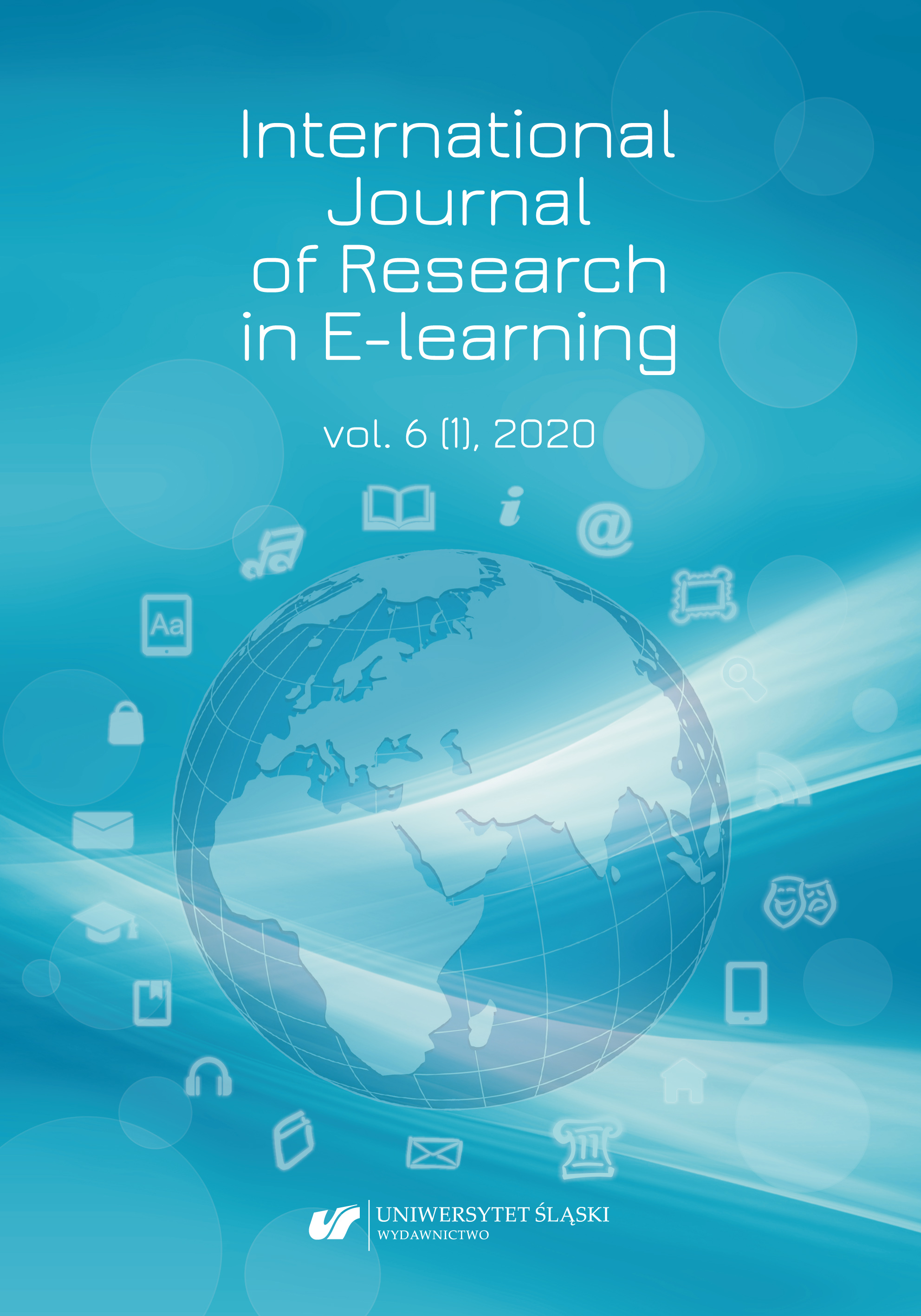Blomberg, G., Sturmer, K., & Seidel, T. (2011). How pre-service teachers observe teaching on video: Effects of viewers’ teaching subjects and the subject of the video. Teaching and teacher education, 27, 1131‒1140.
Google Scholar
Christ, T. Arya. P., & MingChiu, M. (2017).Video use in teacher education: An international survey of practices. Teaching and Teacher Education, 63, 22‒35.
Google Scholar
Fritzko, J.S. (2007). Quasiprofessional activity in the preparation of future teachers in the conditions of the pedagogical college. Internet magazine “Eidos”. Retrieved from http: www.eidos.ru/joumal/2007/0930-24.htm.
Google Scholar
Gaudin, C., & Chalies, S. (2015). Video viewing in teacher education and professional development: A literature review. Educational research review, 16, 41‒67.
Google Scholar
Haran, M., Sagan, O., & Liba O. (2018). Formation of methodological and informational competence of the primary school teacher. Information Technologies and Learning Tools, 3, 304-315.
Google Scholar
Korol, B. (2005). Quasiprofessional activity in the process of preparing future teachers. Retrieved from http://www.nbuv.gov.ua/old_jrn/Soc_Gum/Vchu/N135/p096-101.pdf.
Google Scholar
Litke, E. (2019). The Nature and Quality of Algebra Instruction: Using a Content-Focused Observation Tool as a Lens for Understanding and Improving Instructional Practice, Cognition and Instruction, DOI: 10.1080/07370008.2019.1616740.
Google Scholar
Masats, D., & Dooly, M. (2011). Rethinking the use of video in teacher education: A holistic approach. Teaching and Teacher Education, 27, 1151‒1162.
Google Scholar
Michael B., Sherry, Lauriann M., Messier-Jones & Joanelle, Morales (2018). Positioning in prospective secondary English teachers’ annotations of teaching videos. English Teaching: Practice & Critique, 17, 152‒167.
Google Scholar
Noskova, T., Pavlova, T., Yakovleva, O., & Smyrnova-Trybulska E. (2017). Programmed and audiovisual learning – the stages of information technology implementation in the educational practice . Edukacja Humanistyczna, 2, 123‒137.
Google Scholar
Seidel, T., Blomberg, G., & Renkl, A. (2013). Instructional strategies for using video in teacher education. Teaching and Teacher Education, 34, 56‒65.
Google Scholar
Skvortsova S. (2015). Formation of methodical competence of future teachers through the academic discipline «Methodology of teaching mathematics». Psychologist Pedagogy specială Asistenţă socială, 24‒32.
Google Scholar
Skvortsova S., & Haran M. (2015). Preparation of future primary school teachers for studying mathematics students. Mountain School of the Ukrainian Carpathians, 12‒13, 209‒215.
Google Scholar
Skvortsova, S., & Haran, M. (2017). Training for primary school teachers in teaching mathematics using information technologies. Effective Development of Teachers’ Skills in the Area of ICT and E-learning, Scientific Monograph edited by Eugenia Smyrnova-Trybulska, 9, 414-439. ISSN: 2451-3644 (print edition) ISSN 2451-3652 (digital edition) ISBN 978-83-60071-96-0.
Google Scholar
Skvortsova, S., & Haran, M. (2018). The constructor of multimedia lecture presentations as a means of studying the discipline «Methodology of teaching mathematics at primary school». E-learning and Smart Learning Environment for the Preparation of New Generation Specialists. Monograph Scientific Editor Eugenia Smyrnova-Trybulska, 10, 531‒549.
Google Scholar
Smyrnova–Trybulska, E., Ogrodzka-Mazur, E., Szafrańska-Gajdzica, A., Drlík, M., Cápay, M., Tomanová, J., Švec, P., Morze, N., Makhachashvili, R., Romanyukha, M., Nakazny, M., Sorokina, L., Issa, Tomayess, & Issa, Theodora. (2016). Recommended Applications for Making Presentations and Didactic Videos. Some Research Results. DIVAI 2016 – Distance Learning in Applied Informatics (pp. 235–246). ISBN 978-80-7552-249-8. ISSN 2464-7470 (Print) ISSN 2464-7489 (On-line).
Google Scholar
Verbitsky, A.A, & Bakshaeva, N.A. (1997). The problem of the transformation of motives in contextual learning. Questions of psychology, 3, 17‒19.
Google Scholar
Zhelanova, V. (2012). Lecture of contextual type as a form of organization of training in the system of professional training of the future primary school teacher in the university. Scientific herald of Uzhgorod National University. Series: Pedagogy. Social work, 24, 48–52.
Google Scholar


 https://doi.org/10.31261/IJREL.2020.6.1.03
https://doi.org/10.31261/IJREL.2020.6.1.03
